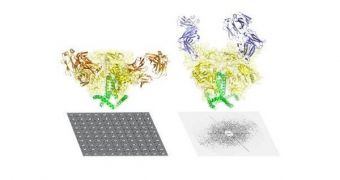In a groundbreaking new study, a team of scientists was able to create a highly-detailed image of the complex envelop that protects the HI virus (HIV) from agents that try to destroy it.
The target of the study, the tripartite HIV envelope protein, has until now been one of the most sough-for and difficult targets in structural biology.
Working together, experts from the Scripps Research Institute (SRI) and the Weill Cornell Medical College were able to create an atomic-level structure model of the envelope protein, potentially paving the way for new vaccines and treatments for HIV and AIDS.
Official statistics from the World Health Organization indicate that HIV infects roughly 34 million people around the globe, out of which about 3.4 million are children. By figuring out a way to address AIDS, scientists would solve one of the most complex medical issues in history.
Details of the new investigation appear in two papers, published in the early online issue of the esteemed journal Science, on October 31. The senior author of the study was Ian A. Wilson, who is the Hansen Professor of Structural Biology at SRI
Previous efforts of neutralizing HIV have largely failed precisely because of the protein envelope that safeguards the pathogen from external threats. The virus does not do much damage by itself, but it makes the human immune system vulnerable to threats that would otherwise be easily neutralized.
“Most of the prior structural studies of this envelope complex focused on individual subunits, but we've needed the structure of the full complex to properly define the sites of vulnerability that could be targeted, for example with a vaccine,” says Wilson, quoted by e! Science News.
In order to create their extremely-detailed model, the team used advanced imaging techniques, including electron microscopy and X-ray crystallography. The level of detail in their image is several orders of magnitude above anything else reported in the field.
The study provides important new data on how the viral envelope changes during infection, and on how it assembles, as well as on the similarities and differences between HIV and other viral agents, such as the flu and Ebola.

 14 DAY TRIAL //
14 DAY TRIAL //